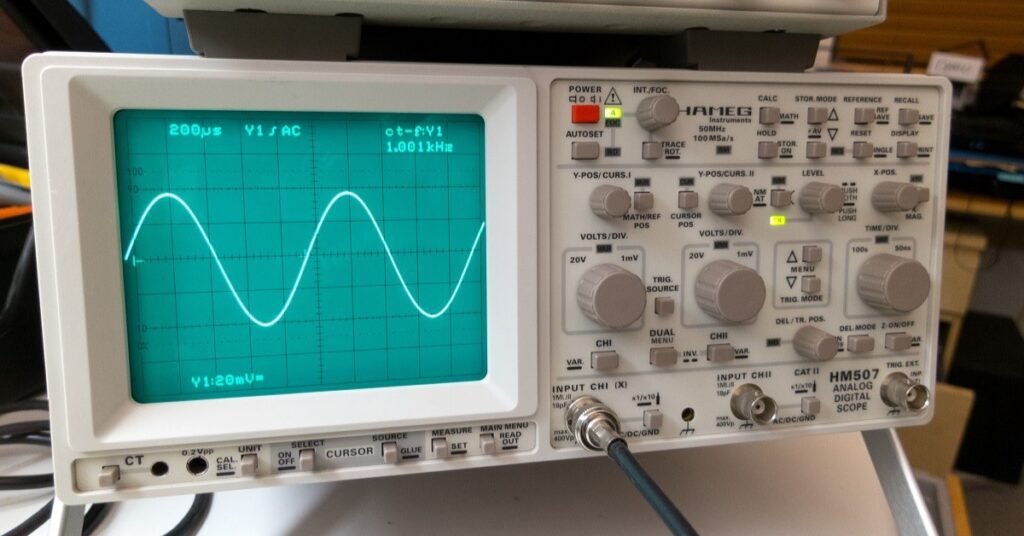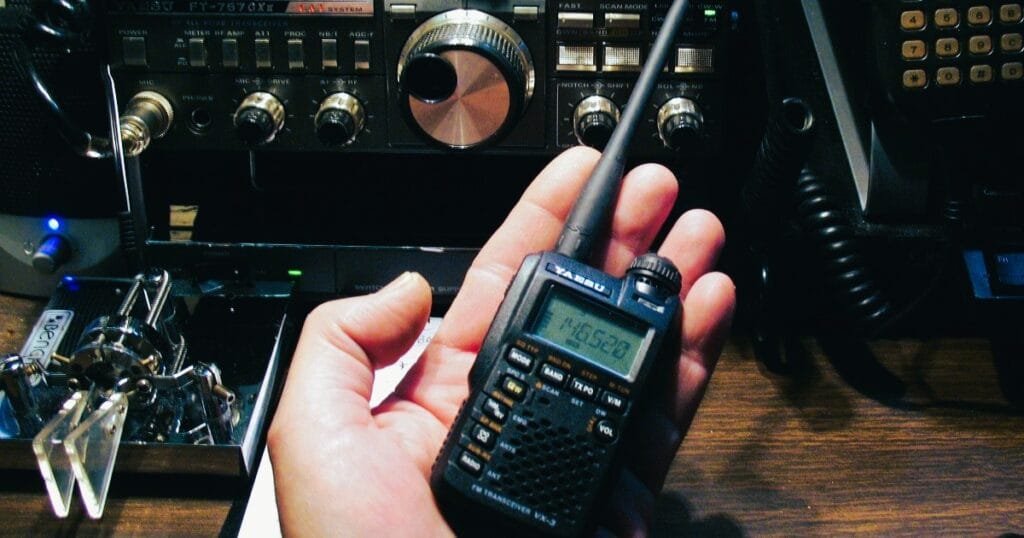Table of Contents
ToggleThe Ham Radio Frequency Chart: Your Ticket to Radio Bliss
Welcome back to TalkieTrail, where we transform static into magic. Today, we will look at something that every ham radio fan should be familiar with: the ham radio frequency chart. Whether you’re a seasoned veteran or just starting out, understanding this chart is like owning the keys to the radio kingdom. In this ham radio review, we’ll decode it together and discover the secrets to improved communication, fewer irritations, and maybe even a few chuckles.
So, What Exactly is a Ham Radio Frequency Chart?
Consider a treasure map that, instead of leading to money, directs you to crystal-clear communication with no interruption. A ham radio frequency chart is essentially a thorough reference to the frequencies allotted for amateur radio users. These frequencies are not given out at random; they are carefully designated by international treaties and national legislation to ensure that everything runs well. Without the chart, you may end yourself yelling into the abyss or, worse, mistakenly broadcasting your grocery list on a government frequency. Oops!
Ham radio frequency charts are the necessary blueprint for every amateur operator. Learning where you can transmit is as crucial as learning how to use your equipment. The International Telecommunication Union (ITU) divides the world into three areas, each with its own set of frequencies for amateur radio. The frequency chart helps you understand which frequencies are accessible to you based on your location and license class.
Don’t know which frequencies you are using in your ham radio? Click here to find out.
Why Bother with the Frequency Chart? (Hint: It’s Super Important)

You may be asking, “Why should I care about this chart? I just want to communicate with my ham pals!” Okay, here’s why:
◘ Stay Out of Trouble
One of the most important reasons to adhere to the ham radio frequency chart is legality. Broadcasting on unlicensed frequencies may result in penalties, equipment seizure, or, worse, loss of your ham radio license. Sticking to the specified frequency ranges ensures you’re following the rules—no unsolicited interference with other services, such as air traffic control (because nobody wants to be that guy). Knowing the chart guarantees that you comply with both national and international requirements.
◘ Sound Like a Pro
Each frequency band has its own distinct propagation properties, which means that certain bands are better suited to different modes of communication. Some bands work well for long-distance conversations, while others are ideal for local communication. When you know which band to use and when, you’ll sound like an expert on the radio. Understanding these distinctions can significantly improve your ham radio experience.
◘ Maximize Your Reach
Not all frequencies are created equal in terms of distance. Some bands are exceptional at reaching the opposite side of the earth, while others have a more limited range. Mastering the ham radio frequency chart allows you to optimize your radio’s capabilities and get the most out of your equipment. Whether you’re looking for a rare DX station or simply making a local contact, the frequency chart will direct you to the appropriate band.
Curious about how far mobile walkie-talkies can really connect? Check here.
◘ Make New Friends
The frequency chart is useful for more than simply determining where you can broadcast; it also helps you locate others. Different groups of hams assemble on various bands and frequencies. Whether you’re interested in emergency networks, contests, or just casual conversation, the chart will help you connect with the appropriate individuals at the right moment. Imagine it as a social map for the amateur radio community.
The Main Frequency Bands: Your New Best Friends

Now that we’ve established the significance of the ham radio frequency chart, let’s look more closely at some of the most popular bands. These frequency ranges are like the greatest radio clubs in town, each with its own distinct mood and opportunity for contact.
‣ 160 Meters (1.8-2 MHz)
When the sun goes down and you’re ready for some serious long-distance communication, head to the “Top Band,” often known as 160 meters. It’s the band for night owls and contest addicts, with excellent propagation after dark. However, because of its vulnerability to noise, it is a band best suited to experienced operators.
‣ 80/75 Meters (3.5-4 MHz)
Good for regional and local rag chews – 80/75 meter band: Nighttime is best till about half an hour after sunset, thereafter signs will decline a lot. Well this is where you sit with a group of people and talk about things like the weather, anything happening in town or some juicy gossip! The best way to describe it is probably like a coffee shop for the ham radio bands – comfortable, familiar and always busy. This is a great band for both the new operator and experienced hams.
‣ 40 Meters (7.0-7.3 MHz)
40 meters is the Swiss Army knife of bands, being both versatile and dependable. It works well for both local and international talks at any time of day. During the day, it may give great regional coverage, but at night it allows for long-distance communication. 40m would be a good choice, it is often the band you can get in Winchester.
‣ 20 Meters (14.0-14.35 MHz)
For reaching a very far distance like you are trying to reach halfway of the planet, 20 meters can be your best choice. It can cover a very long distance because of reliable propagation using capability. It is where the long-distance magic occurs, particularly during the day. This frequency is frequently buzzing with DX activity, making it a favorite among those seeking uncommon encounters. Whether you’re looking to establish a rapid contact or maintain a protracted QSO, 20 meters delivers.
‣ 15 Meters (21.0-21.45 MHz)
When the sun is active during solar peaks, 15 meters comes alive with DXing and competitiveness. During peak sun activity, 15 meters provides some of the finest global communication chances.
‣ 10 Meters (28.0-29.7 MHz)
However, and a little unexpectedly, 10 meters gives some of the greatest long distance potential (when conditions are right) It feels like riding a perfect wave — when you get it right is oh so sweet. This band is often a favorite for the newly licensed hams who like to chase DX.
‣ VHF/UHF Bands (50 MHz and Beyond)
The better frequencies, 6M and higher as well known local communications bands plus the relay stations or even satellite links. They’re the local radio scene to a T- they bunch up and get around so much it hurts! VHF/UHF is great for casual repeater conversations right up through advanced satellite or meteor scatter operations.
UHF or VHF? Which is the Best? Click here to know.
Band Plans and Modes: Where Things Get Really Interesting

Now that you’ve covered the basic frequency bands, let’s look at band plans and modes. Within each band, distinct portions are designated for various modes of operation. This is when things become extremely fascinating.
‣ Voice Modes (SSB, AM, FM)
Whether you’re looking for serious SSB (Single Side Band) on HF bands or a casual FM discussion on VHF/UHF, the frequency chart has a location for you. Voice communication is one of the most common modalities in amateur radio, and knowing where to find other voice operators is essential for initiating contacts.
‣ CW (Morse Code)
The original text. CW (Continuous Wave) occupies the lower end of most bands and is ideal for when things get rough. CW signals may frequently get through when spoken signals cannot, giving it a dependable method under challenging situations. Furthermore, there’s something inherently awesome about sending a message the old-fashioned manner.
‣ Digital Modes
From RTTY to FT8, these modes focus on efficiency and accuracy. If you enjoy data sharing and want to keep everything digital, this is your playground. Digital modes are gaining popularity because of their ability to communicate in bad situations and low bandwidth utilization.
‣ Satellite Operations
Ever wished to communicate with someone via satellite? Here’s your opportunity. Certain sectors of the VHF/UHF frequencies are allocated for satellite communications, providing a direct link to space. Satellite operations bring an intriguing dimension to amateur radio by allowing you to make contacts across long distances with orbital repeaters.
Tips to Master the Frequency Chart Without Losing Your Mind
Here are some methods of listing the usage of which you could grow to be a pro on navigating through the ham radio frequency chart in no time.
1. Stay Updated
Frequencies might fluctuate, so be sure you have the most recent chart. It’s like checking for traffic before you get on the road—always a good idea. Regulatory changes, new band allocations, and developing band plans can all influence where and how you operate, so being informed is critical.
2. Know Your License Privileges
Your ham license is more than just a nice piece of paper; it also grants you particular operating rights. Make sure you understand the bands and modes you are permitted to utilize. For example, in the United States, Technician, General, and Amateur Extra class operators have varying degrees of access to the frequency spectrum.
3. Respect the Band Plans
Following the band’s intentions is more than simply good manners; it also keeps the airways open for everyone. Think of it as taking turns on the playground—it’s simply the correct thing to do. Amateur radio groups create band plans to guarantee that different modes of communication do not conflict.
4. Experiment and Have Fun
Do not be hesitant to explore different bands and styles. The ham radio frequency chart serves as a guide, but the trip is entirely up to you. Who knows. You could find a new favorite frequency. Exploring different aspects of the spectrum might lead to new experiences and friendships.
Final Thought: The Frequency Chart—Your Ultimate Ham Radio Guide
The ham radio frequency chart is more than simply a list of numbers; it is your entry point to the greatest ham radio experience imaginable. By learning this chart, you will not only increase your communication abilities but also open up new avenues for connecting with hams all around the world. So take your chart, turn on your radio, and prepare to explore the airways like never before.
Stay tuned to TalkieTrail.com for more ham radio tips, techniques, and information. And remember to stay tuned, connected, and, most importantly, have fun out there!
73 from the TalkieTrail crew!


